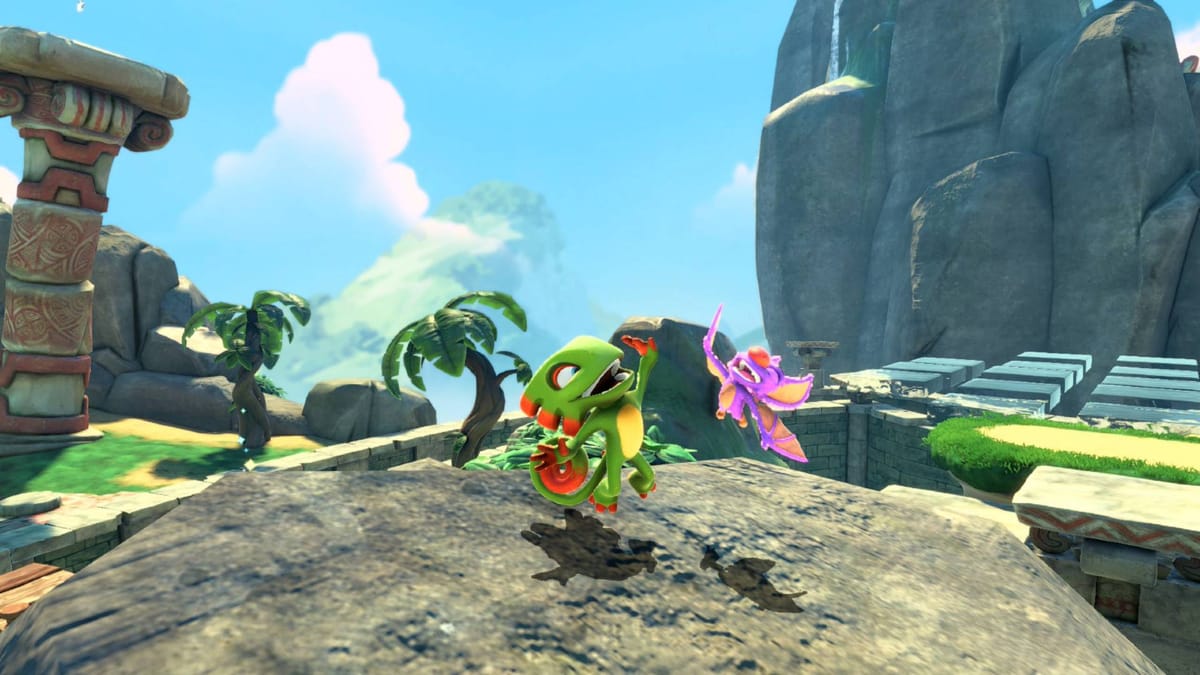
There’s little that stings more than the broken promises begot by childhood nostalgia – it’s one thing when a childhood classic doesn’t hold up, yet what happens when the old masters of the game lose their golden touch? And what better example in gaming than Yooka-Laylee: designed by former Rare developers at Playtonic, the spiritual successor that proudly wore Banjo-Kazooie on its sleeve, debuted with a wildly successful Kickstarter campaign, yet ultimately released to a chilly reception. With fumblings from a wayward camera to aimless, repetitive level design, it recalled the worst of 3D platforming’s foibles rather than celebrating its yesteryear strengths. Contrary to Playtonic’s name, it was as if they’d forgotten the secret ingredient – that formula concocting Nintendo 64 collectathons – that made their platformers so beloved.
As someone who skipped the original and its 2D successor in Yooka-Laylee and the Impossible Lair, I’m ill-equipped to discuss how Yooka-Laylee missed the mark, let alone how the game’s second chance in Yooka-Replaylee – a remaster aiming to address its shortcomings -- improves on it. Having grown up with a certified degree in N64 collecathons, however, what I can discuss is how Yooka-Replaylee stands on its own merits. Does this remaster successfully move past the original’s flaws? Is it a worthy successor to those Rare classics of old? And finally, is it good?
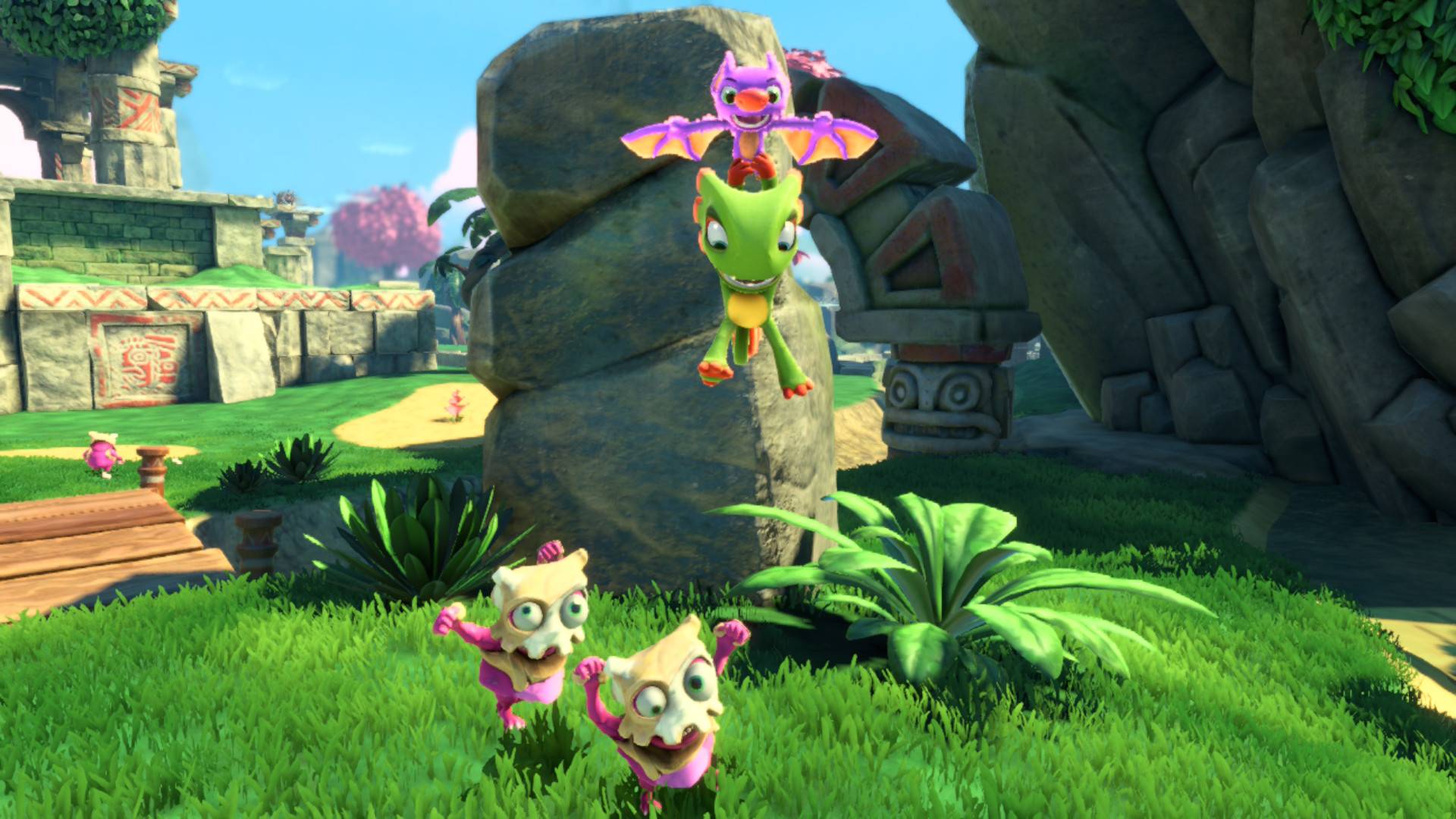
The answer to all those questions is, well, not really. Make no mistake: Yooka-Replaylee boasts charm and humor aplenty, and it’s evident much love’s been poured into this remaster. Yet it’s not just that the foundational problems that plagued the original persist in their mediocrity – contrary to what I said above, I daresay Playtonic’s mission to cut down on waste and repetition only reveals new weaknesses to its faulty construction.
Let’s start from the top: after washing up on Shipwreck Creek, our intrepid duo in Yooka the chameleon and Laylee the bat, make a deal with Hivory Towers CEO Capital B (a talking bee, don’t you know; clever!) to hunt down the lost Pagies of the fabled One Book, which can grant any wish. Cue collectathon adventures in five different worlds, all with their respective checklists in Pagies, Quills, Mollycools, and whatever other sentient trinkets lie waiting to be earned, spent, and situated into one’s museum of bragging rights.
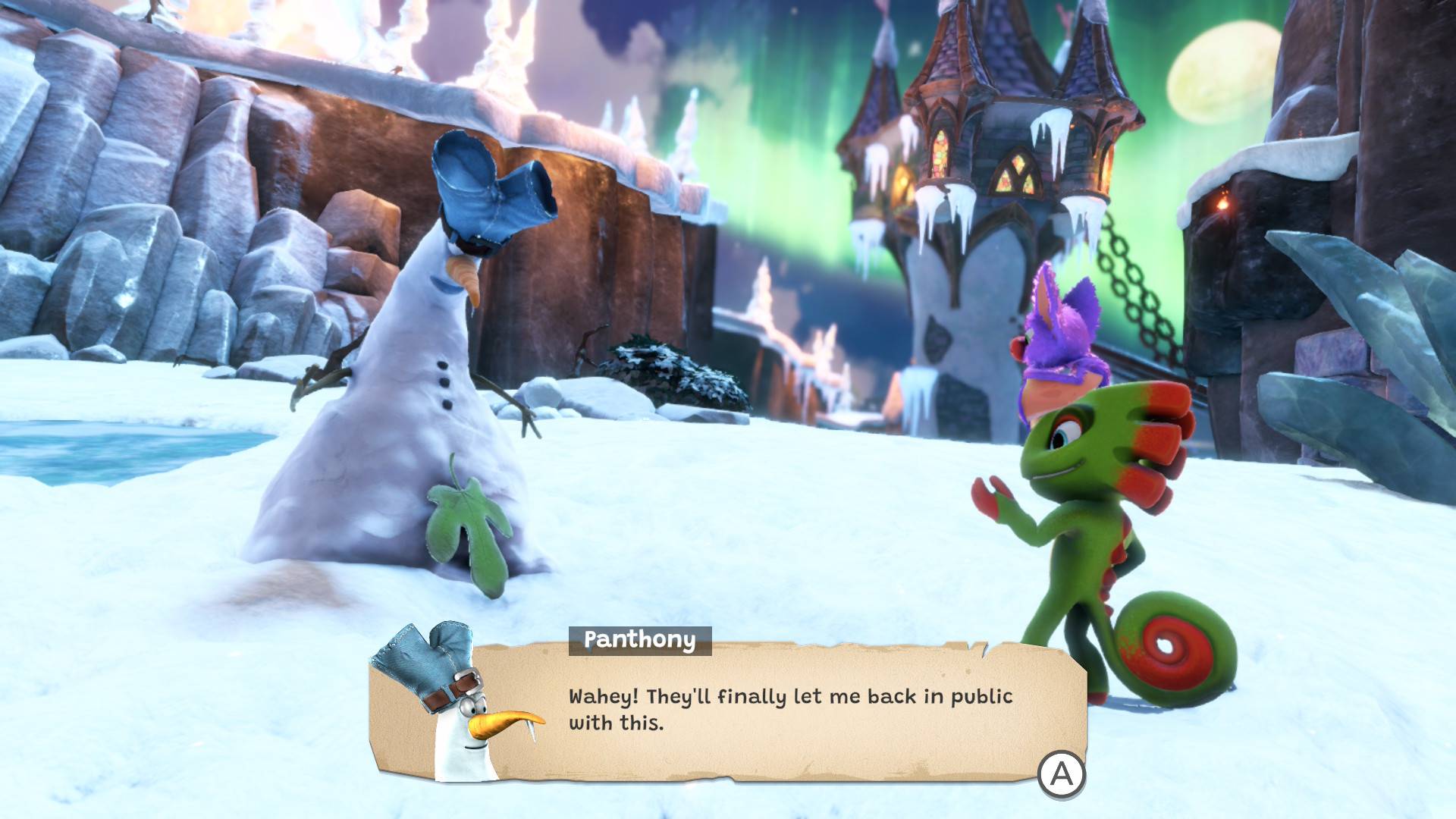
More than anything, Yooka-Replaylee’s commitment to the bit is familiar, like visiting an old friend. Be it villain Capital B’s corporate-speak to the irreverent wordplay littered throughout the script (“The Batship Crazy”? Oh my!), it’s clear Playtonic had oodles of fun crafting these characters. Self-referential wit is the name of the game in Yooka-Replaylee, not the least in the googly eyes that decorated Rare’s flora, fauna, and inanimate objects; in fact, one enemy is just a pair of eyeballs, latching onto anything nearby like a parasitic host. (Eye carumba! Uh, I’ll see myself out now.)
On a first pass, Yooka-Replaylee hits the mark of a remaster: for one, its graphical improvements have each world and its host of unorthodox character designs pop with vivid color and vivid expressions. Meanwhile, prior supplemental busts such as Rextro the dinosaur’s arcade games are now wholly reinvented, this time with what’s easily my favorite portion in isometric-esque level design (think Kirby’s Blowout Blast) as Rextro stretches his neck to smash blocks, nab medals, and dodge bombs. Contrary to Laylee’s wisecracks, I’d like to see Rextro break out in an indie hit of his own.
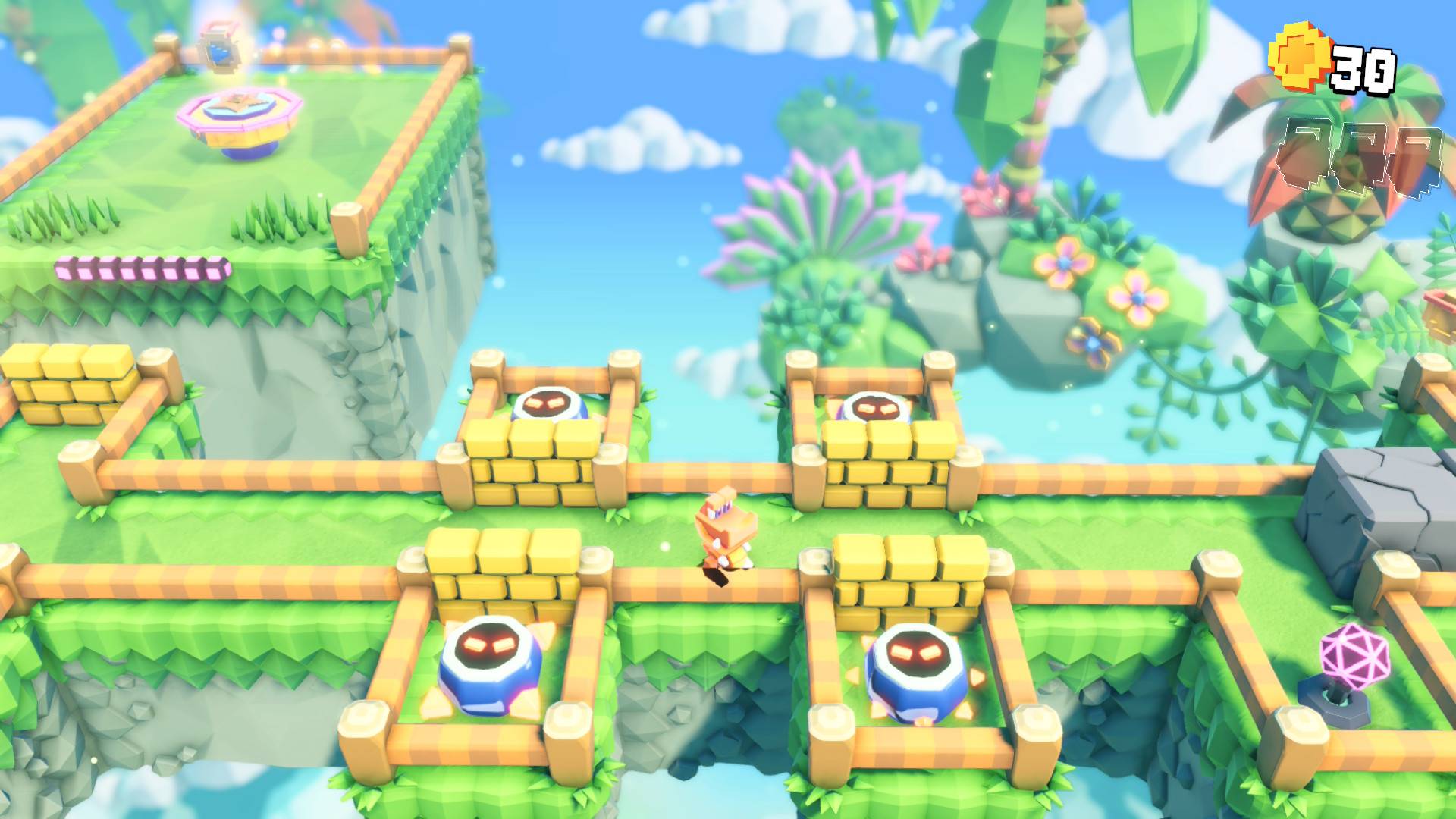
Alas, its level design is where it still comes up short. To recap: the original Yooka-Laylee tasked its heroes with unlocking and expanding each storybook world with the necessary amount of Pagies, often leaving players short-changed with these sparse collectibles. Yooka-Replaylee dispenses with the expansion system entirely, opening the locked portions from the get-go and populating each world with Pagies aplenty. Taking a page from Super Mario Odyssey’s playbook, Yooka-Replaylee ensures that you’ll always have enough MacMuffins to progress from playing mini-games to hunting ghosts.
And yet, it's all a little too much. Levels consist of confusing geography, with few distinguishable landmarks for players to place their bearings. Reward-granting NPCs are scattered any which way with little rhyme or reason. The denser focus on rewards means players are guided by whatever trinkets catch their eye as opposed to the telegraphed lay of the land, too busy gobbling up empty calories rather than applying any inherent problem-solving.
To offer a direct comparison between two thematic cousins, Banjo-Kazooie’s Freezeezy Peak is a pitch-perfect snow level, the giant snowman serving as its central signpost to circle around. Wozza the walrus guards his den from any would-be predators (i.e., bears), and Boggy the bear promises a race beneath the racing banner. In contrast, Yooka-Replaylee’s Glitterglaze Glacier is a futile exercise in verticality, from its aimless bodies of water to its NPCs hanging out in local ditches. Consulting the new map introduces a fast travel system – a point in its favor – yet it’s still too easy to get lost, with its one landmark in a nondescript castle serving only to randomly introduce an isometric maze.
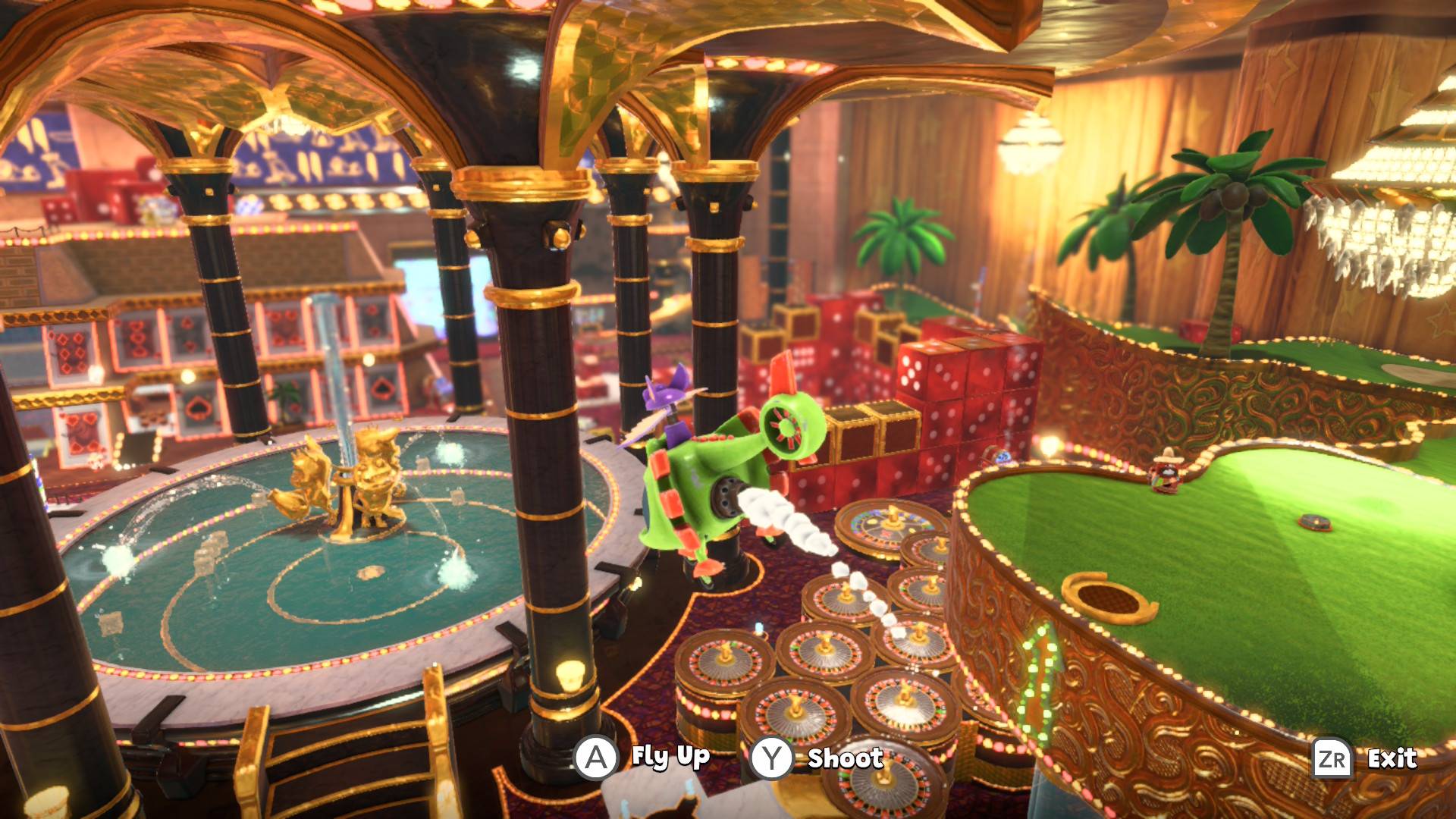
Indeed, it’s this artificial reliance on Banjo-Kazooie-isms that still brings Yooka-Replaylee down. Take Dr. Puzz’s scientific transformations, for instance: the swamp world turning Yooka-Laylee into a swarm of synchronized piranhas is interesting; the same cannot be said for the tropical world’s boring, ugly plant -- a poor first impression, leaving us wanting for the termites and crocodiles of old. And then we’re left with a headscratcher in the casino world’s helicopter: yes, it’s fun blowing up broken slot machines, but why am I flying a helicopter in a casino? Much as it delights in bee puns and storybook metaphors, Yooka-Replayee often struggles in threading the contextual needle.
Other familiar elements also fall short. The orchestrated music conducted by the Prague Philharmonic Orchestra channels the familiar playfulness of Nintendo 64 yore, yet the lack of distinct melodies renders it one of Grant Kirkhope’s weaker scores. There’s little variety in combat, with recycled enemy types all easily dispatched with Yooka’s tail-spin attacks. The mandatory quiz is sudden and pointless, less so a check on the player’s engagement with the game than a wink and a nod as if uttering “hey, remember Banjo-Kazooie did this too? Wasn’t that funny? You liked this, right?” Topped off with the Switch 2 version’s performance issues – be it the long load times, 30 FPS, and the occasional shutdown or two – and it’s still something of a right mess.
One, I wonder, was even possible to address. Cutting down on repetition is all well and good, but with the deluge in Pagies means I was never once gated off. (Right down to waltzing up to Capital B’s office early, if I so chose.) World expansion may’ve been a failed application of the storybook motif, but cutting it overwhelms with the ensuing level bloat. Having all the moves unlocked from the start presents no friction, no earned sense of discovery. Much as Yooka-Replaylee champions reinventing itself, its missteps are too baked into the original’s design to fix.
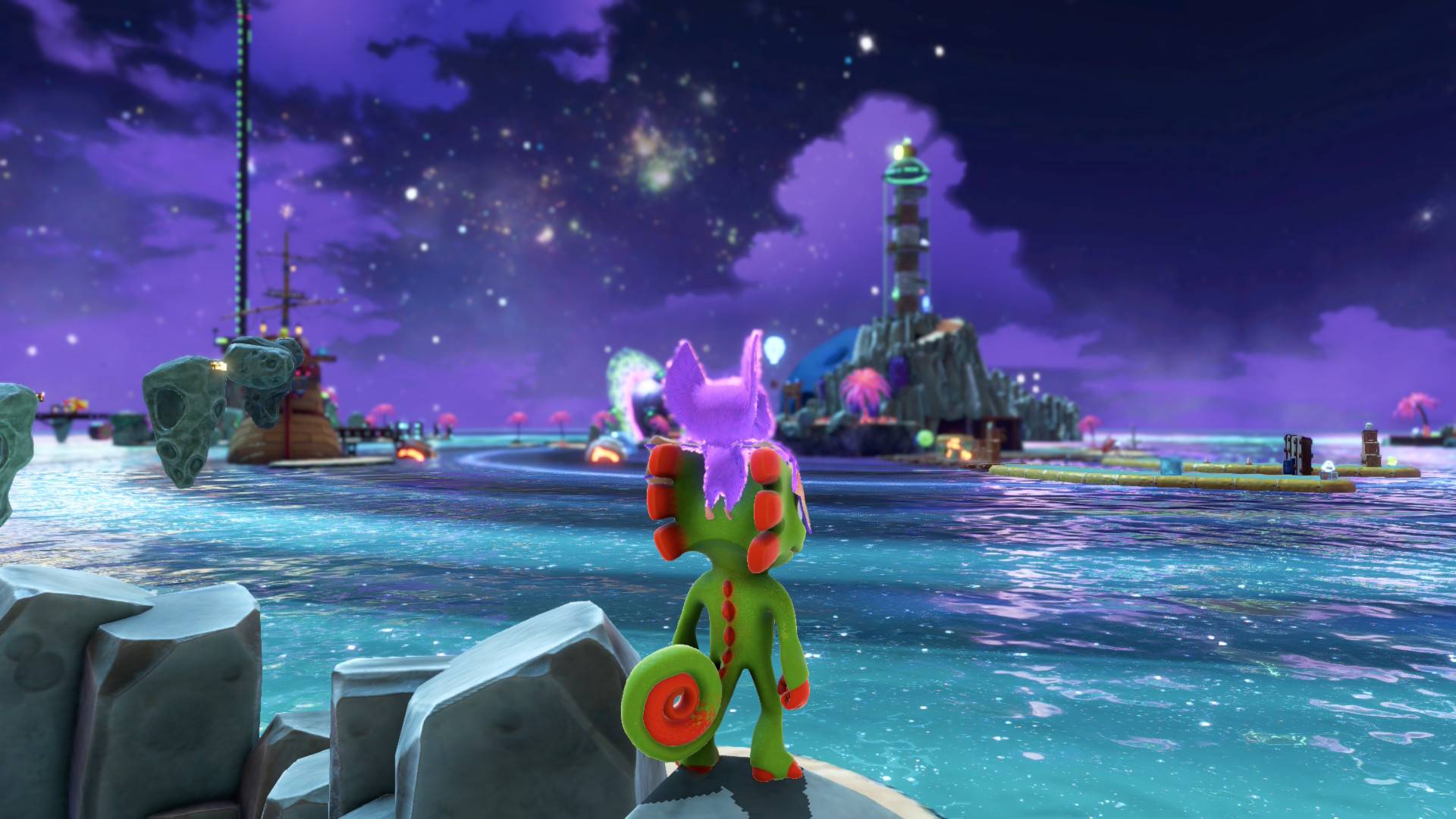
The appeal of Rare’s N64 platformers operated off the logic of a six-year-old’s playset – does it make sense that Banjo lives in peaceful ignorance of the witch down Spiral Mountain’s dirt road? No, but it’s the inherent storybook whimsy and carefully curated collectibles, building off the new standard set by Super Mario 64, that appealed to all ages. Playtonic’s remastering efforts are admirable, but much as Yooka-Replaylee’s heart is in the right place, this hollow monument to late 90’s gaming does our memories no favors. It’s best they close this scrapbook and turn the page forward.
Yooka-Replaylee
Alright
Yooka-Replaylee oozes with charm and color, yet much as its visuals endear, its lack of cohesion still can’t match the heights of its 64-bit ancestors. While filled to the gills with collectibles, those nostalgic for Rare’s golden age may well be better off revisiting their classics via Nintendo Switch Online or digging out their old Banjo cartridges.
Pros
- Expressive characters and fun script
- A visual overhaul of the original game
- Rextro!
Cons
- Sprawling level design is still a bust
- Certain alterations bring new problems
- Switch 2 performance issues
- Thematic inconsistencies and weak callbacks feel hollow
This review is based on a Nintendo Switch 2 copy provided by PlayTonic.
